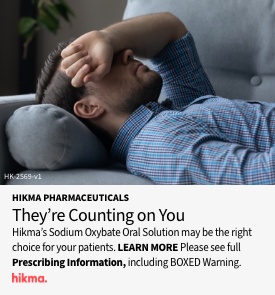Blend In to Stand Out: Why We Love Native Ads for Pharma Marketing
So you want to engage audiences, build trust and overcome ad fatigue? Try native advertising! Learn more about this exciting advertising format and why we think it’s a great addition to any pharmaceutical marketing strategy.
Regardless of whether a pharmaceutical brand is trying to reach patients or practitioners, finding that sweet spot between compliance, credibility and effectiveness can be a real challenge. Especially when it comes to digital marketing, the need to educate your audiences and establish brand trust often takes a backseat to more practical considerations like:
- How am I supposed to stand out from the crowd when we’re all legally obligated to say (and not say) the same things?
How do I overcome audience objections and preconceptions long enough to have a real, meaningful dialogue?
How the heck am I going to get this through PRC review?
While pharma marketing challenges are many, native advertising has emerged as a powerful tool to address these challenges, offering a seamless and engaging way to reach consumers.
What is Native Advertising?
Basically, it’s a form of paid media in which the ads are integrated into the natural flow of content. Unlike traditional banner or display ads, which seek to disrupt, native ads seek to blend in. By matching the design, style and tone of the surrounding content, native ads are less intrusive, more engaging and circumvent the “banner blindness” often associated with traditional ads.
Although they can appear in any medium, they’re most often found in social media feeds, web pages and search engine results pages, and focus on light touch and awareness content rather than hard selling. Some examples of native ads include:
- Sponsored Articles: Paid articles matching the editorial style of news websites or blogs, subtly promoting the advertiser’s brand while providing valuable content
- In-Feed Ads: Ads designed to look like organic posts in social media feeds, news sites and content discovery platforms, such as promoted posts on Facebook or sponsored tweets on Twitter
- Promoted Listings: Highlighted product ads on e-commerce platforms like Amazon or eBay, appearing higher in search results due to paid promotion
- Recommendation Widgets: Widgets suggesting additional content, labeled as “Sponsored Content” or “You Might Like,” blending in with the site’s natural recommendations
- In-Ad (IAB Standard) with Native Elements: Display ads with contextually relevant images and headlines, designed to blend with the site’s content
- Search Ads: Ads appearing at the top or bottom of search engine results, resembling organic search results but marked as ads
- Video Ads: Autoplaying video ads within feeds or articles on platforms like Facebook, Instagram and YouTube, appearing as part of the content

An example of how native ads appear in a Recommendation Widget on the Milwaukee Business Journal's website.

An example of how Sponsored Article native ads appear on the Milwaukee Business Journal's website.
What Makes Native Ads a Good Addition to Your Marketing Strategy
Although public trust has somewhat increased in recent years, biopharma is still one of the least-trusted industries. In fact, our own original research found that, of the millions of conversations studied, 69% indicated a neutral or negative sentiment around the pharmaceutical industry. From lack of transparency to price concerns, there are a myriad of reasons why patients or healthcare providers may not fully buy into what we pharma marketers are selling.
While native advertising can’t ease all of these concerns, it can help your product information be more warmly received. By integrating into its surroundings, it taps into the trust the audience has already built with the medium. Coupled with strategic “soft sell” messaging, it becomes a more palatable way to engage with your brand.
In particular, here are 5 key benefits that we think make native ads a worthy perfect addition to your pharmaceutical marketing strategy.
1. You Can Engage Audiences Without Annoying Them
Native ads are designed to blend seamlessly with the surrounding content, which significantly enhances their effectiveness in capturing audience attention. In fact, consumers are 53% more likely to look at native ads compared to traditional display ads. Unlike traditional banner ads that can be easily ignored or blocked, the non-disruptive nature of native ads lead to engagement rates that are 20% to 60% higher than banners.
2. They Help Build Trust Through Editorial Context
Native ads draw credibility from their surroundings. The more trustworthy the source, the more credible your ads appear. Studies found that 68% of consumers trust native ads seen in an editorial context, compared to 55% for social media ads, and more than 80% of news consumers state that seeing ads within news content either maintains or enhances their trust in the brand. This is particularly important for pharmaceutical brands, which must maintain high levels of credibility to communicate effectively to their audience.
3. They Use Behavioral and Interest-Based Targeting for More Ad Relevance
Native advertising is great at zeroing in on specific demographics and personalizing content to boost relevance and engagement. Using advanced algorithms and data analytics, these platforms can really get to know user behavior, preferences and demographics, ensuring the right content reaches the right audience. This personalization not only ramps up user engagement but also makes the entire advertising campaign more effective by delivering content that’s genuinely useful and relevant.
4. They Can Educate Your Audiences While Advertising Your Products
Native advertising offers a unique opportunity for pharmaceutical brands to enhance patient and community education through engaging and informative content, like articles, videos and infographics. For example, a native ad on a health-focused website might feature a detailed article on managing diabetes, including tips on diet, exercise and medication. By consistently providing valuable and accurate health information and drawing from the credibility of its medium, educational native ads can improve patient outcomes and brand loyalty.
5. They See a Higher Return on Investment, Especially Long-Term
Native advertising offers pharmaceutical brands a cost-effective, efficient way to achieve higher returns on their marketing investments. They have been shown to increase purchase intent by 18%, and often achieve lower CPCs compared to traditional display ads. For example, long-term native campaigns (running more than six months) have a 36.4% lower average CPC than shorter campaigns, making them a more economical choice for sustained marketing efforts.
But What About the Disadvantages?
While native advertising can be a powerful tool in a pharma marketer’s belt, it’s important to be aware of its potential downsides. Balancing the benefits with these potential drawbacks can help achieve more effective and trustworthy campaigns.
- Potential for Deception: Because these ads are designed to blend in seamlessly with editorial content, users may have difficulty distinguishing between paid promotions and genuine content. This can lead to issues of transparency and trust.
- Limited Reach: While native ads may perform exceptionally well on certain sites or networks, their effectiveness can vary significantly across different platforms. This variability can make it challenging to achieve broad exposure and consistent results.
- Measurement Challenges: Tracking the performance of native ads presents unique challenges compared to traditional digital ads. Metrics such as engagement, brand lift and conversion rates are often more difficult to measure and attribute directly to native ad campaigns.
- Scalability Issues: Each ad typically requires customization to fit the style and tone of different platforms, which can be time-consuming and resource-intensive. This lack of standardization can hinder the efficient expansion of campaigns across multiple channels, making it difficult to reach a wider audience.
- Less Brand Control: With native advertising, brands may have less control over how their ads are displayed and positioned compared to traditional ads. This reliance on publishers can result in inconsistencies in how the brand message is presented across different platforms. Additionally, if the publisher’s content or reputation suffers, it can negatively impact the effectiveness and perception of the native ads placed there.

Sodium Oxybate Oral Solution: A Native Advertising Success Story
Navigating a competitive pharma space, Responsory used strategic audience segmentation and sustained multichannel marketing efforts to successfully launch Hikma Pharmaceuticals’ Sodium Oxybate Oral Solution. By developing a targeted website and executing a digital marketing strategy that included a native advertising campaign, Responsory effectively introduced this cost-effective narcolepsy treatment to over 5,100 new patients for this niche medication within the first 18 months.
Read the full case study here.
How to Get Started with Native Advertising
Drawbacks notwithstanding, we still feel native advertising is a great way for pharma marketers to enhance brand visibility and engagement. Here are some tips and best practices to ensure your native advertising efforts are effective and aligned with your overall marketing strategy:
- Understand Your Audience: Before diving into native advertising, it’s important to know your target audience’s preferences, behaviors and pain points to help create content that resonates with them and seamlessly fits into their online experience.
- Focus on Quality Content: Native ads should provide value to the audience. Focus on creating high-quality, informative and engaging content that aligns with the platform’s editorial standards. The more relevant and useful the content, the more likely it is to engage the audience.
- Maintain Transparency: Clearly label your native ads as sponsored or promoted content. This helps to ensure that users are aware they are viewing an advertisement, which can enhance credibility and trust in your brand.
- Use Compelling Visuals: High-quality images, videos and infographics can capture attention and convey your message more effectively than text alone. Make sure your visuals are relevant and enhance the overall message of your ad.
- Integrate with Overall Marketing Strategy: In marketing, it’s important to never put your proverbial eggs into one basket. Your native advertising efforts should be part of your broader marketing strategy, with consistent messaging and branding across all channels for a cohesive and effective marketing mix.
Native Integration, Powerful Results
Native advertising offers many benefits for pharmaceutical brands, from enhanced engagement and increased trust to better targeting and higher ROI. Understanding how native ads work, their benefits and their drawbacks is the first step in effectively integrating them into your digital marketing strategy. As the digital landscape continues to evolve, native advertising offers a unique opportunity to deliver high quality, educational content in the form of product advertising – something that benefits both your audiences and bottom line.
Ready to explore the benefits of native advertising for your pharmaceutical brand? Contact Responsory today to learn how we can help you create effective and compliant native ad campaigns that drive results.

About the Author
A lifelong dinosaur enthusiast and lover of old things, Aimee Dierbeck aspired to become a museum curator from a young age. As a bright-eyed anthropology major interning at a local museum, she realized that her true passion for museums did not lie in the artifacts or fossils themselves but in the stories they told and how these stories were communicated to the public. From this revelation, her academic interests and subsequent career took a significant turn into marketing, graphic design, copywriting and, eventually, web strategy. In her role as Director of Web Services, she leverages her love for storytelling and digital curiosity to curate intentional, impactful experiences.






